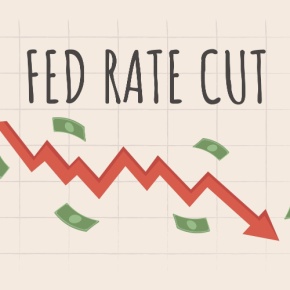By: Steve Sosnick, Chief Strategist, Interactive Brokers
For over a month, I’ve been concerned that markets have been pricing in a pair of conflicting economic scenarios. We first laid out the paradox in early December:
I’ve been wrestling with what appears to be an obvious conundrum regarding the stock market’s mentality. Equity investors say that they are hopeful for a soft landing for the economy yet seem to relish signals of more overt weakness. Stock markets have rightfully shown that they crave monetary accommodation, so the prospect of rate cuts would of course be welcomed. But I have been wondering whether that desire for looser money reflects rational expectations or a more concerning addictive behavior. Have we become so obsessed with the outcome of lower rates that we lost sight about the circumstances that might bring them about?
Let’s examine the current situation. Fed Funds futures are pricing in at least six rate cuts for 2024, with a roughly 60% chance for a seventh by December. Meanwhile, according to a recent report by FactSet, analysts are projecting earnings growth of 11.8% and revenue growth of 5.5% for the S&P 500 (SPX) for calendar year 2024. Ask yourself whether both predictions can simultaneously be true.
While it is reasonable to think that we may indeed see rate cuts if inflation remains near the Fed’s 2% target, it is hard to imagine that the Fed will cut rates six or seven times – in an election year, no less – without an economic justification. But the justification would require some sort of dire economic circumstances. Think recession, banking crisis, or something similar. None of those would enable the sort of earnings growth that is currently expected. It seems crazy to root for an economic catastrophe simply in order to receive massive monetary stimulus if it risks decimating earnings.
It is therefore quite difficult, if not impossible, to imagine that we can get double-digit earnings growth and mid-single-digit revenue growth without a decent, if not robust economy. While some of the revenue growth could be achieved if prices rise sufficiently, that would of course imply that inflation is running above the Fed’s target, muting their ability and desire to cut rates. But if we assume that revenue growth roughly matches GDP growth plus inflation (a big, generalized assumption, to be fair), and inflation falls sufficiently to justify rate cuts, it implies GDP growth of about 2-3%. We’re not likely to get six or seven cuts if the economy grows at anything resembling that pace.
How then do we resolve this paradox? It will require data. Fortunately, we will be receiving quite a bit of it from corporate America over the coming weeks. Earnings season is thus far in its infancy, led by the idiosyncratic banking sector. As a wider range of companies report, and thus offer guidance, we will get far more clarity about whether they view current expectations to be realistic. If they confirm the current guidance, then that is certainly good for bottom-up valuations and tells a positive story about the economic backdrop. If not, then expect some volatility in both individual equities and the broader markets as stock prices adjust to the new realities.
Also, we get an FOMC meeting in the heart of the earnings parade on January 31st. Current expectations are for no change at this meeting, but it is widely believed that they would signal whether a cut is coming in March (current probability is about 65%). The recent playbook has been for Chair Powell to make comments at the press conference that can be interpreted as friendly for markets, only to have a parade of other Fed speakers push back upon those comments in the ensuing days. Of course, as we noted last week:
The supporting cast can say whatever they want, but the audience only really wants to hear from the star of the production.
Can the Chair continue to offer comments that will allow markets to assume that we will see more than double the three rate cuts acknowledged by the last “dot plot”? We’ll know soon enough, I suppose.
This post first appeared on January 16th 2023, IBKR Traders’ Insight Blog
PHOTO CREDIT :https://www.shutterstock.com/g/pandorastudio
Via SHUTTERSTOCK
DISCLOSURE: INTERACTIVE BROKERS
The analysis in this material is provided for information only and is not and should not be construed as an offer to sell or the solicitation of an offer to buy any security. To the extent that this material discusses general market activity, industry or sector trends or other broad-based economic or political conditions, it should not be construed as research or investment advice. To the extent that it includes references to specific securities, commodities, currencies, or other instruments, those references do not constitute a recommendation by IBKR to buy, sell or hold such investments. This material does not and is not intended to take into account the particular financial conditions, investment objectives or requirements of individual customers. Before acting on this material, you should consider whether it is suitable for your particular circumstances and, as necessary, seek professional advice.
The views and opinions expressed herein are those of the author and do not necessarily reflect the views of Interactive Brokers, its affiliates, or its employees.



